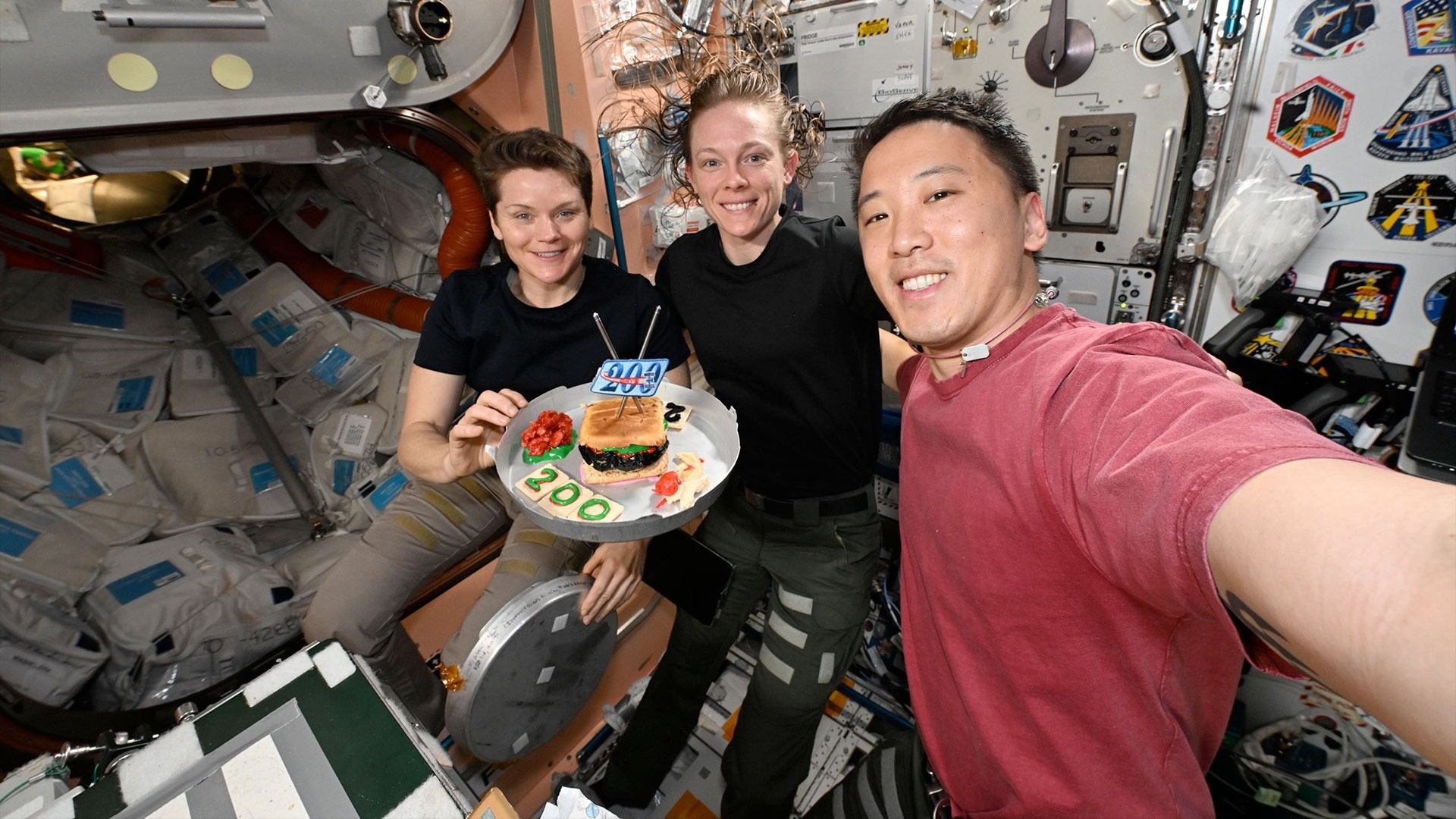How to choose binoculars for astronomy and skywatching
A good pair of binoculars can help stargazers get the most out of the night sky. Find out how to pick the right ones for you.

One of the easiest ways to take a spacewalk without ever leaving Earth is to scan the night sky with binoculars from the comfort of a reclining lounge chair on a clear, dark night. But for the best experience, you better make sure you choose binoculars that are actually designed for astronomy.
Below, we've rounded up everything you need to know about how to choose binoculars. Once you're ready to pick up a pair, have a look through our round-up of the best binoculars you can currently buy. Then, make sure you keep them in tip-top shape by following our advice on how to clean your binoculars properly.
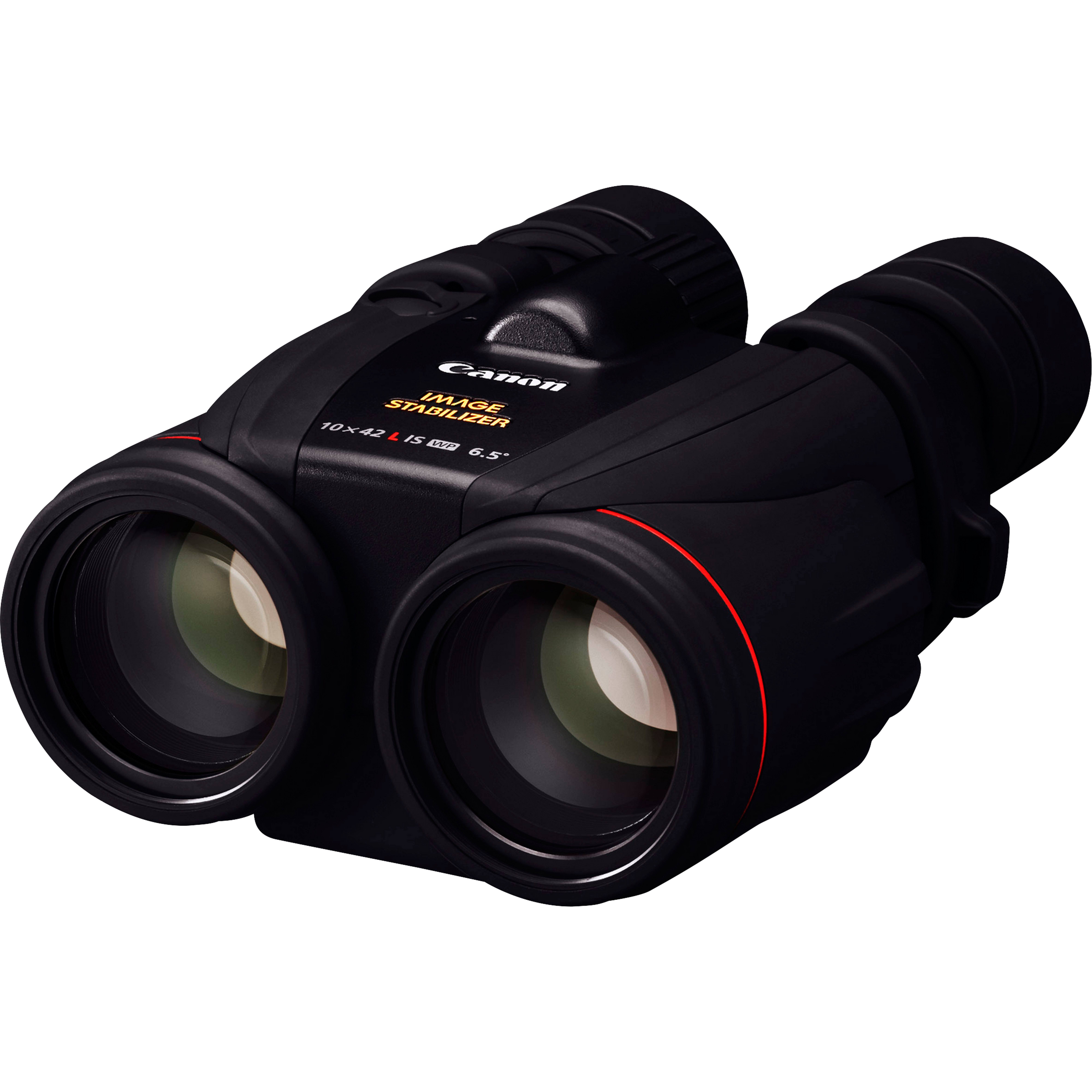
Our absolute top pick for stargazing binoculars, these feature Canon's ground-breaking Optical Image Stabilization (IS) system, ensuring your stars look pinpoint accurate every time.
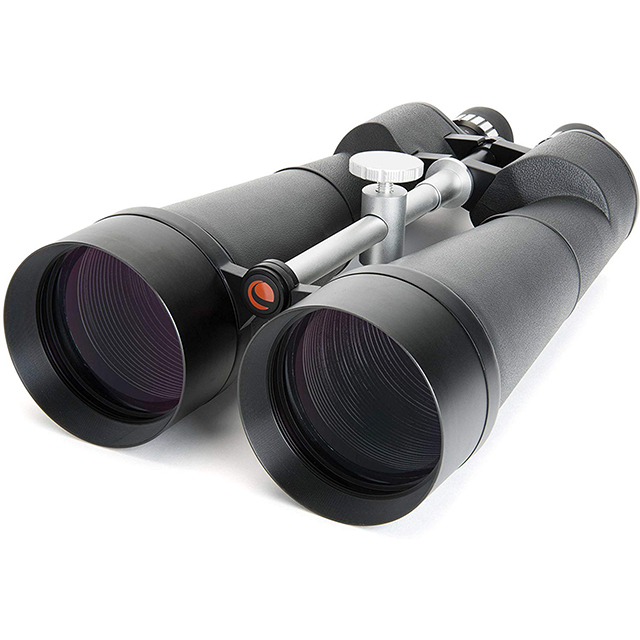
This monster pair offers some of the best magnification you can get in a pair of binoculars and the 100mm lenses drink in light, giving you the equivalent of two 4-inch miniature telescopes.
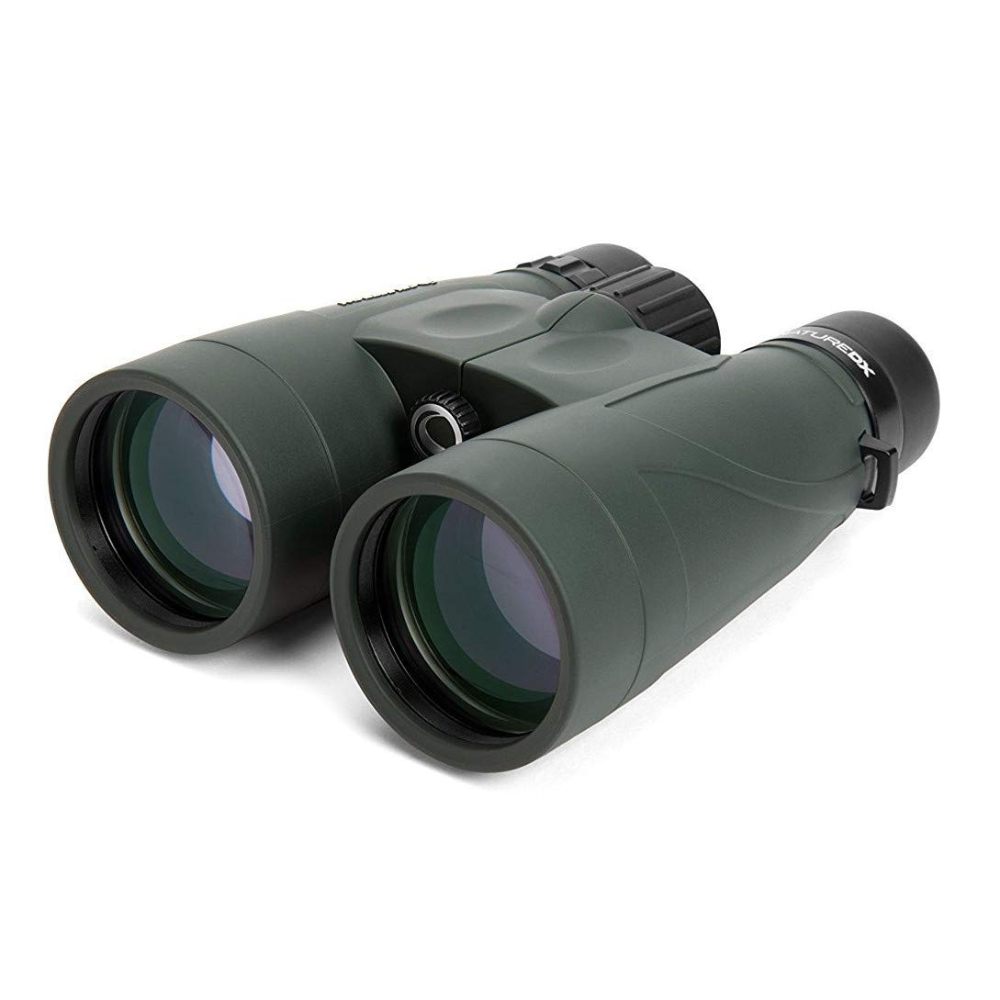
This is a fantastic pair of stargazing binoculars for those shopping on a budget. They're robust and waterproof, as well as offering great optics and magnification. They can double up as a wildlife-watching pair, too.
How to choose binoculars for stargazing
You See with Your Brain
Your eyes are marvelously adapted for sensing light and color, and for reacting to bright and dark. But it's your brain that builds your moving picture of the world. You see in stereo. But your two eyes give you more than just depth perception.
True, the differences in data between your left and right eyes are integrated into depth information by your busy mind. Even though the vast distances of the universe make it challenging to perceive depth, if you inform yourself in advance with some knowledge about the objects you are going to be observing, you can begin to see the universe in 3D. Binoculars make this mental gymnastics faster and easier.
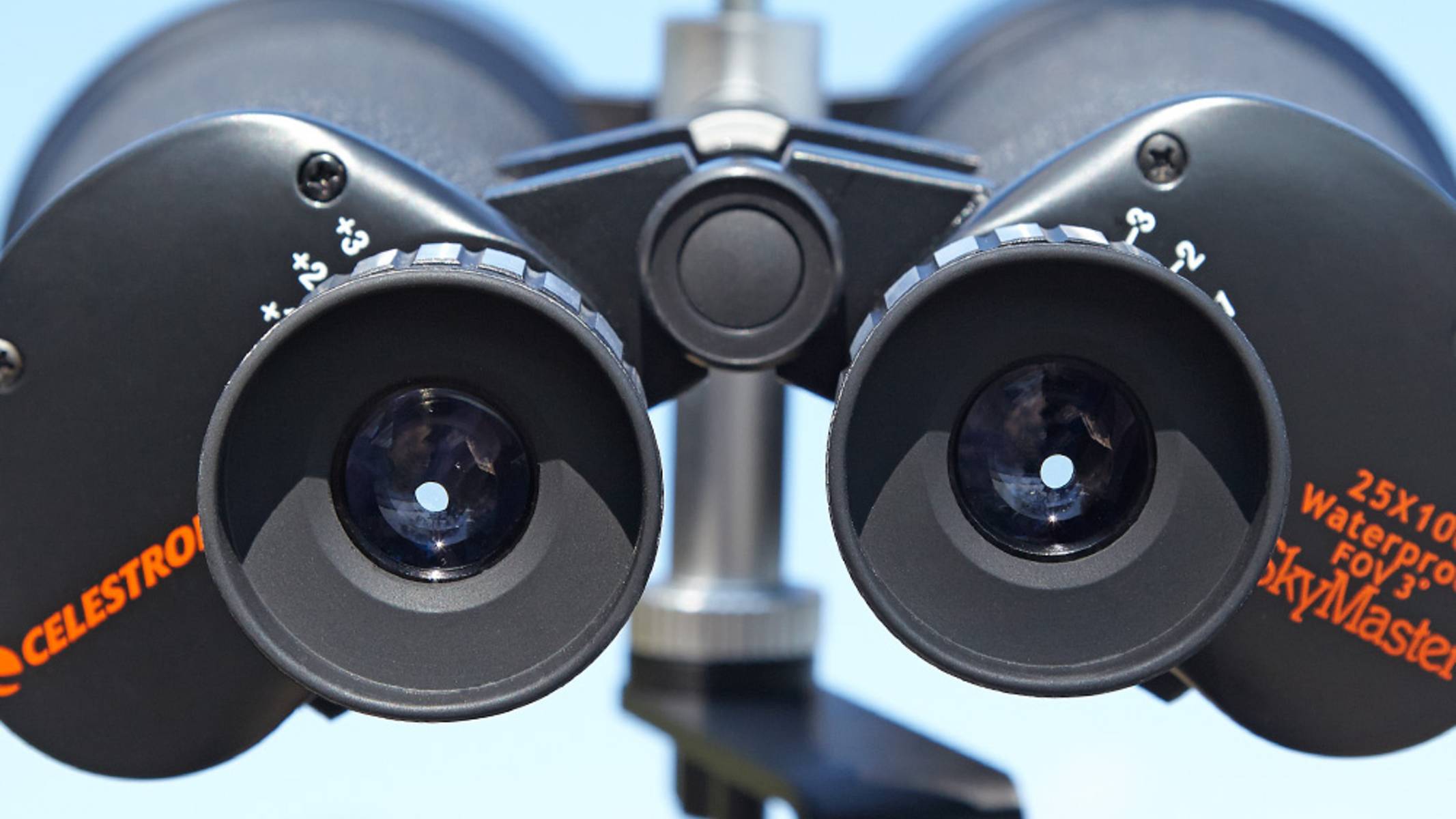
Binoculars are like eyeball extensions, keeping all your brain's visual circuits focused on the task of enjoying the wonders of space. Keeping both eyes walled off from distracting information plays a happy trick on your mental computer.
Depending on the pair you pick, you could see 25 or even 50 times more stars with binoculars than with your unaided eyes. This is not due to the magnification alone, but to the phenomenon of perceptive narrowing driving a flow state. Some people use the term focus, or clarity, to describe the feeling. But it's not an illusion; it's a measurable effect.
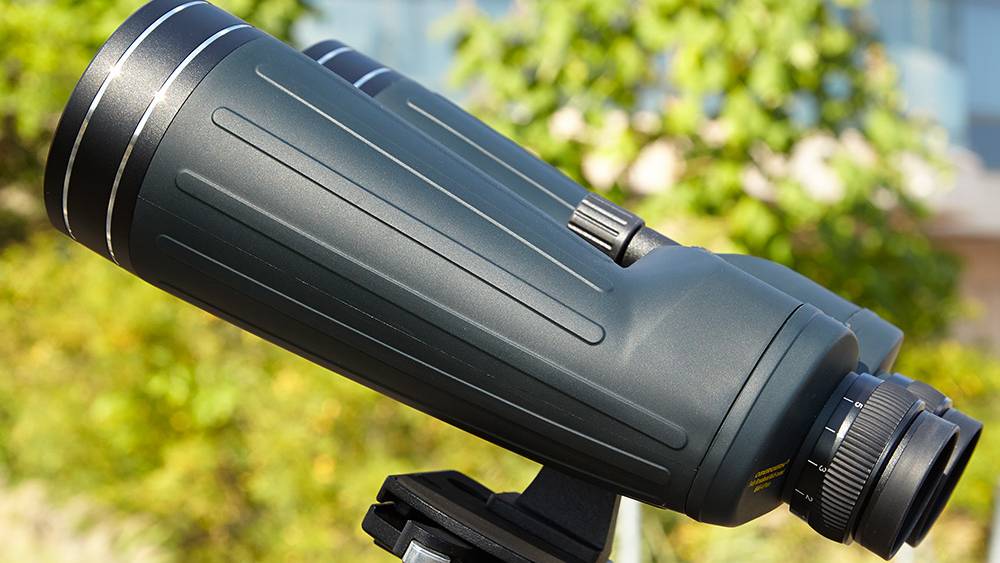
Binoculars vs. Telescopes
Telescopes are big. Even little ones are bigger, heavier and longer than most binoculars. So telescopes need to sit on tripods or rocker-boxes for stability. Angling a long tube up toward the sky makes the shake problem even worse; your extended arm wiggles the front objective lens. Binoculars can lock in tightly to both your eye sockets and your hands are close in to your face for more stability. This is where binoculars have an advantage over even the best telescopes available.
Breaking space news, the latest updates on rocket launches, skywatching events and more!
Telescopes do make objects look larger. But their main job is to gather light. Paradoxically, the more a telescope magnifies an object, the dimmer that object appears. That's a problem when observing deep-sky targets like comets, galaxies and widely diffuse star clusters. It's an issue for everything, really, except the moon — which can be too bright — and a few vivid planets.
Most telescopes use a single eyepiece. Binocular literally means "two eyes". You get twice the opportunity to paint your brain with starlight. Remember, seeing occurs in your mind's eye. For a most fulfilling visual experience, get all your brain's "wetware" working on it.
Telescopes show a small area. Binoculars, with their wider field of view, let you scan the sky for targets. And binoculars give you a much better appreciation for how objects relate to one another. They give you a better chance to see patterns in the cosmos.
Many telescopes show you the sky upside down. Some also make it "backward" — as if seen in a mirror (because that's exactly what's happening). Binoculars present the world in the correct perspective.
Which Binoculars Are Right for You?
Now that we've taken a look at why you may want to choose binoculars over a telescope, it's time to think about what to look for when selecting the best binoculars to meet your night-sky needs. Understanding the different specs and numbers can help you decide which binoculars are best for your specific purposes. We'll give you these in descending order of importance. Skip to the end if you get bored.
How wide is your perspective?
When you're looking at the specifications of a pair of binoculars, you'll find one or two ways of knowing the Field of View you'd experience with that particular pair. It might say something like: 298ft at 1000yds, or 5.7 degrees (these are equal).
Unless you grew up on a boat – or a spaceship – reading compass courses to avoid collisions with large ships, you'll probably find the "1,000-yard field width" number easier to visualize. If you're given just the field-width in degrees (say, 4.3 degrees), simply calculate 52 feet for each 1 degree (224ft @ 1000yds).
For comparison, your clenched fist held out at arm's length covers about 10 degrees of the night sky. The disk of the moon is about 1/2 degree wide.
What does the "x" mean?
You will see stamped right there on every pair of binoculars: 12x70, 25x100, etc. Two numbers separated by an "x." You can think of the "x" as "by." So, a figure like "25x70" is "25 by 70."
The first number is a measure of power, meaning: How much will these binoculars magnify? The second number is the metric diameter of the big round glass lens at the front.
So, "25 by 70" means an instrument that will make an object appear 25 times larger (than your unaided eye would), with an objective lens that measures 70 mm across.
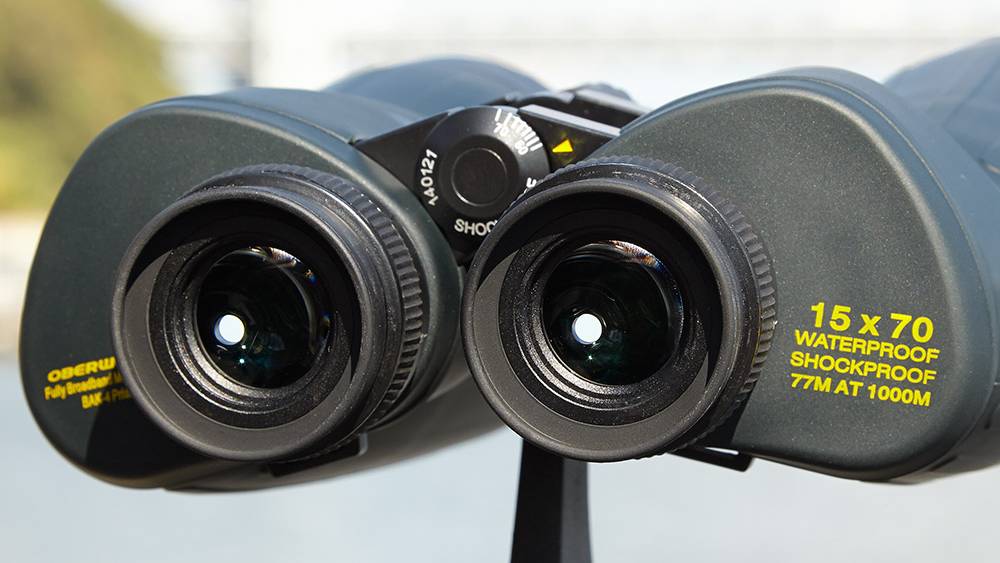
Are you old enough for big binoculars?
The size of a pair of binoculars is also something to consider. For example, take the objective size and divide it by the power. The number you come up with is the diameter of each of those little circles you'll be looking through.
Those bright spots (generally disk-shaped) are called "exit pupils." Higher power binoculars yield smaller exit pupils. [For example, 12x60 binoculars produce 5mm exit pupils; 8x60 binoculars give you 7.5 mm of exit pupil.]
The key is: Exit pupils should roughly match your eyes' pupils. And eyes change with age. As a middle-age person, my dark-adapted eyes open to a pupil diameter of about 5 mm. A 12-year-old child's pupils can open much wider, to almost 8 mm. Lower power binoculars — which tend to be smaller — usually produce larger exit pupil diameters that literally won't fit into my eyes! Take this into account if you're buying binoculars as an adult. Purchasing for someone a bit younger? Have a look through our guide to the best binoculars for kids.
Interestingly, older folks may have more disposable income for the more expensive higher-power instruments. But, to make sure you're spending your money wisely, check the shape of those exit pupils, floating there in the eyepieces: They should be flawlessly round.
Also make sure you have access to dark skies. As magnification goes up, apparent brightness of the image goes down.
Poor optical design can hack off the sides and you will see this clearly, if you can hold the actual binoculars in front of you. If shopping on the Internet, you'll have to pick a brand with a decent reputation, or trust a review like ours.
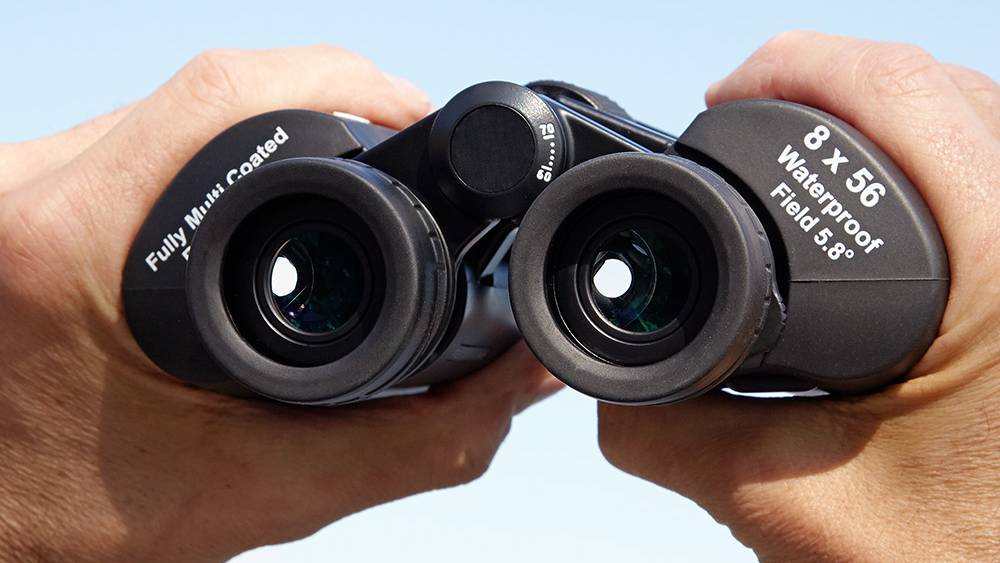
Power: Less is better?
If you are reading this, you no doubt have noticed there are many different configurations on the market. One size definitely does NOT fit all.
Some skywatchers prefer strong magnification to resolve the thousands of light-points within dense star clusters, and to pick out fine structure within galaxies.
Others opt for a wide-field, immersive "space-walking" experience, preferring low-mass portability to power. [Full disclosure: I play for this latter, low-power team.]
Like sports cars or yachts, there's a tendency to want to own the more powerful thing. Certainly, there're some impressively large — "gotta use 'em on a tripod" – monster binoculars on the market. And as we age, there may be good reasons to dial up the magnification a bit.
I believe the best binoculars are the ones you have with you. Meaning: Buy the pair you'll be most likely to take on your travels more often, whether you're going out into the backyard or across the planet. That implies a smaller and lighter form factor, which tends to be lower power. If this is your only pair, I'd suggest an objective no larger than 50 mm (the number after the "x," as in 7x40), and a magnification no bigger than 10x.
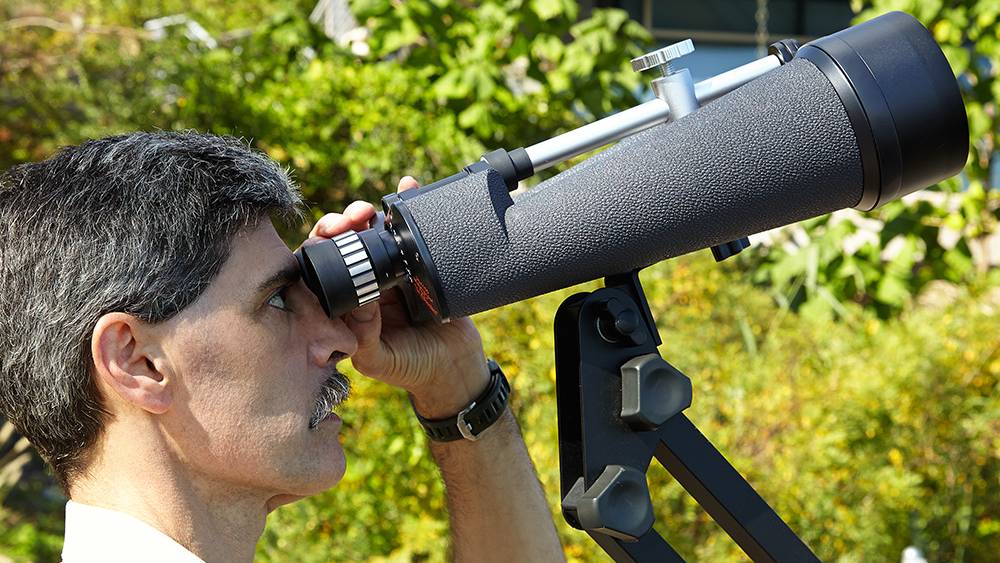
Really, you'll be OK with even smaller binoculars, as long as they are of high-quality optical glass. You can carry an 8x35 pair all day for bird- (or people) watching, and they won't make your arms tremble — and your stars dance like drunkards — when you pick them up at night. The wider view-field of most lower-power binoculars is usually a plus for skywatching.
Meteor showers offer a practical example. You never know exactly where the next bright streak will appear. Yes, you're pretty sure it will come from the "radiant." That’s the name of a constellation (usually) whose location on the sky roughly corresponds to the cloud of cosmic crap into which Earth is plowing to create the shower. [Example: The Leonid meteor shower in November appears to come from the direction of Leo.]
But, in practice, the radiant is an area at least 10 degrees across. You will spot more meteors with a wider field of view. [Note: You'll probably see the most with your unaided eye.] Higher power does you little good; the greater magnification of those fireballs you do catch will only dazzle your eyes, making it more difficult to see smaller ones immediately afterward.
So think carefully about size, weight and stars turning into wiggly lines before you go big. Don't expect telescope companies' marketing pitches to tell you this.
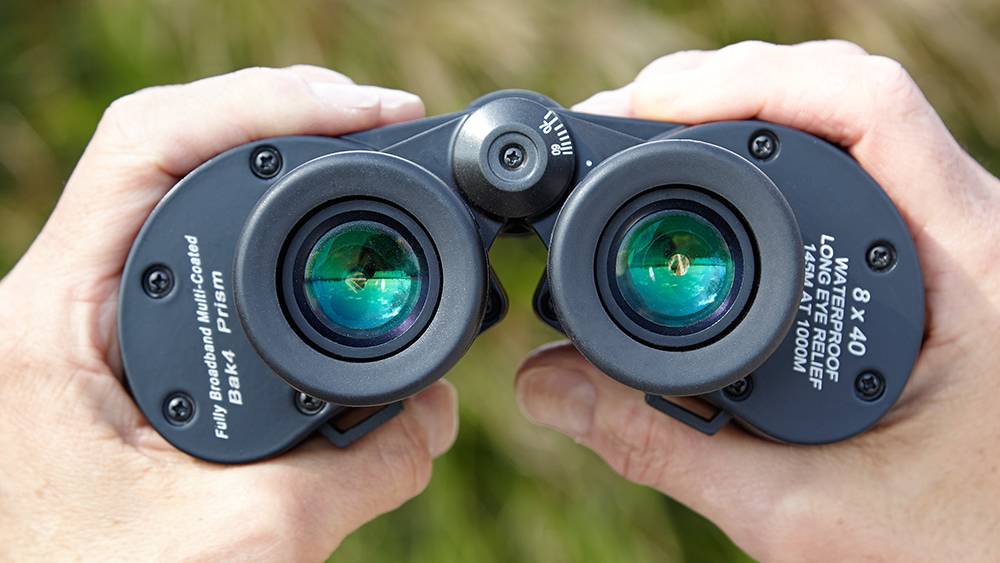
Are they waterproof?
We live on the Water Planet. [That’s why we live at all.] Water is a constantly changing state as local temperature swings. Sometimes it condenses onto your binoculars. Sometimes it rains. And sometimes you drop them overboard.
So looking into waterproof binoculars may be a concern depending on when, where and how you plan to use them.
Many modern binoculars are rubber clad; good for protection against water and shock.
But cheaper binoculars may come with their own built-in water problem, right from the factory. Air laden with water vapor can be sealed in, waiting to fog, bead or rust your binoculars. Look for ones that have been "nitrogen purged" before the manufacturer bottles up the optics.
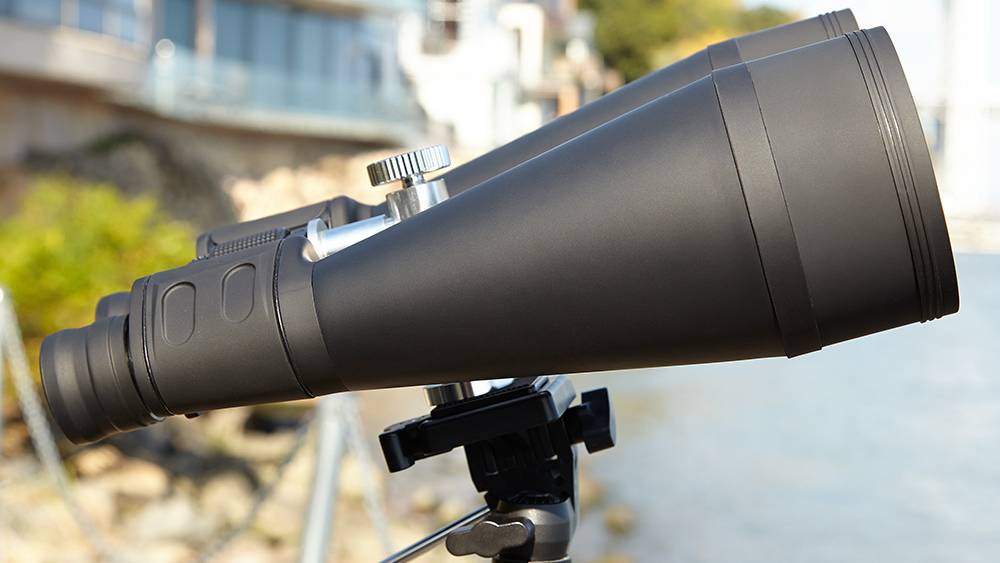
Do they have a tripod adapter?
So, you found the Andromeda galaxy (M31) with your 2-lb., 10x60 binoculars. Now you want to actually see it without all that zigzagging round, turning your stars into lightning bolts. And you also want to show it to your partner. Wouldn't it be nice to just park your binoculars in position on the sky? To do that, you need to be sure your binoculars have a screw mount point for a support system.
The problem with camera tripods is that most of them are hopeless beyond about 30 degrees above the horizon. That can leave out as much as two-thirds of the night sky. There are special armed rigs for binoculars that either fit to or come with sturdy tripods. The best ones are articulated parallelograms, which can swing smoothly through a wide range of angles. These have counterweights to let your optics "float" in front of your eyes. As you might imagine, they are about as expensive as the binoculars themselves.
You can make your own rig. But, really, will you? Instead, read up on our tips on how to hold binoculars steady.
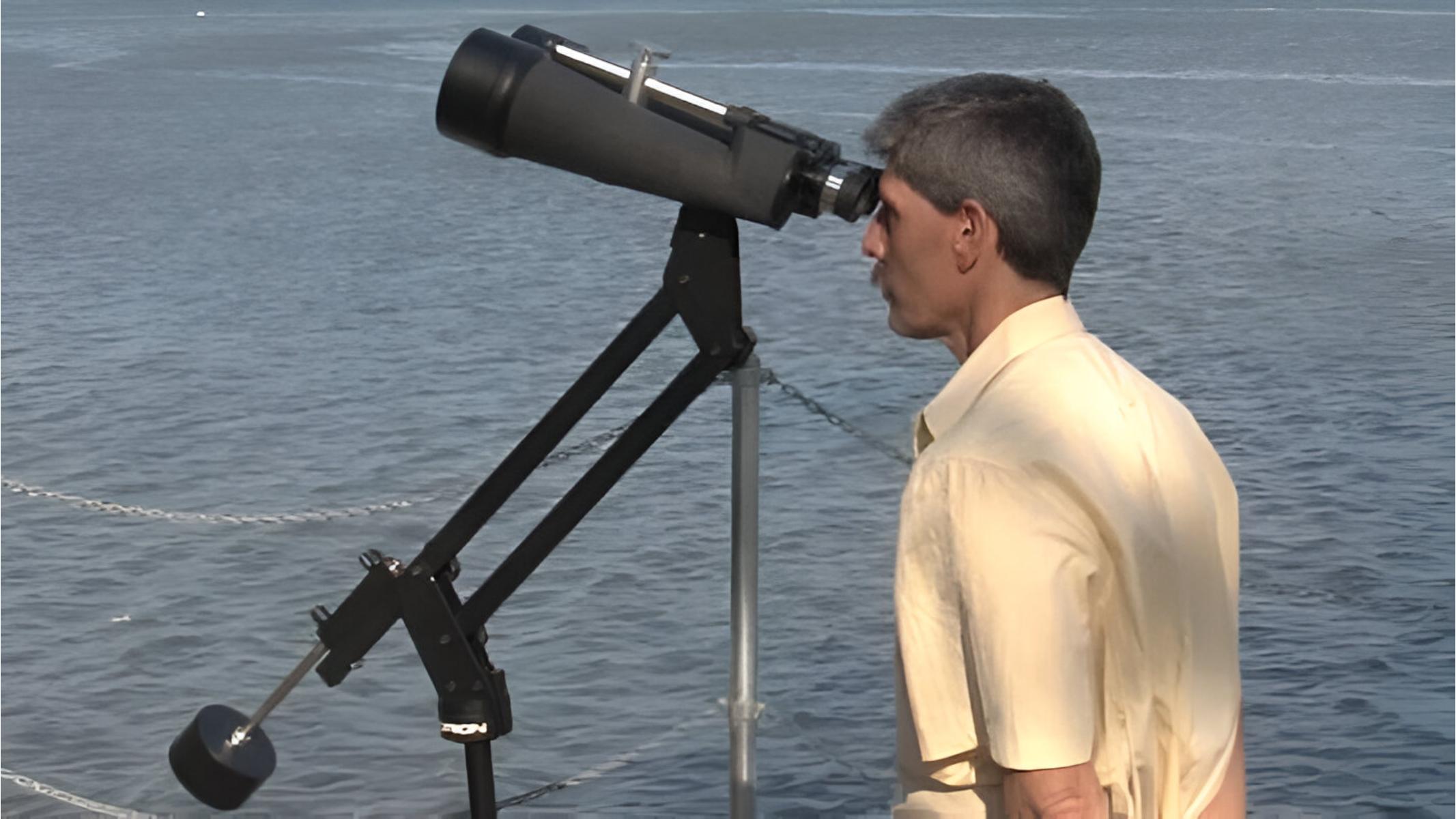
Which pair of binoculars is best for stargazing?
We think the Canon 10x42L IS WP binoculars are the best stargazing binoculars money can buy. They offer supreme optical quality, are fully waterproof and feature Canon's incredible Optical Image Stabilizer (IS) technology, but they are a pricey investment. If you're after a more budget-friendly option, then we also highly rate the Celestron Nature DX 12x56 binoculars, which feature BaK-4 glass, a waterproof design and an impressive magnification and aperture for the money.
The Importance of Porro Prisms
In today's market, the quickest way to identify binoculars that may be good for spying on the universe is to verify the prism design.
Sometime around 1850, Italian optics wizard Ignazio Porro realized that a triangular glass block with a 90-degree corner would double-reflect a light path, letting an image emerge with the same left-right perspective with which it entered.
When two regular geometric Porro prisms are glued together at right angles, they will fold and lengthen the light path in a compact space, while "correcting" the image. With this double Porro rig, objects appear right-side up and not switched left to right. "What you've got is what you'll see," we say.
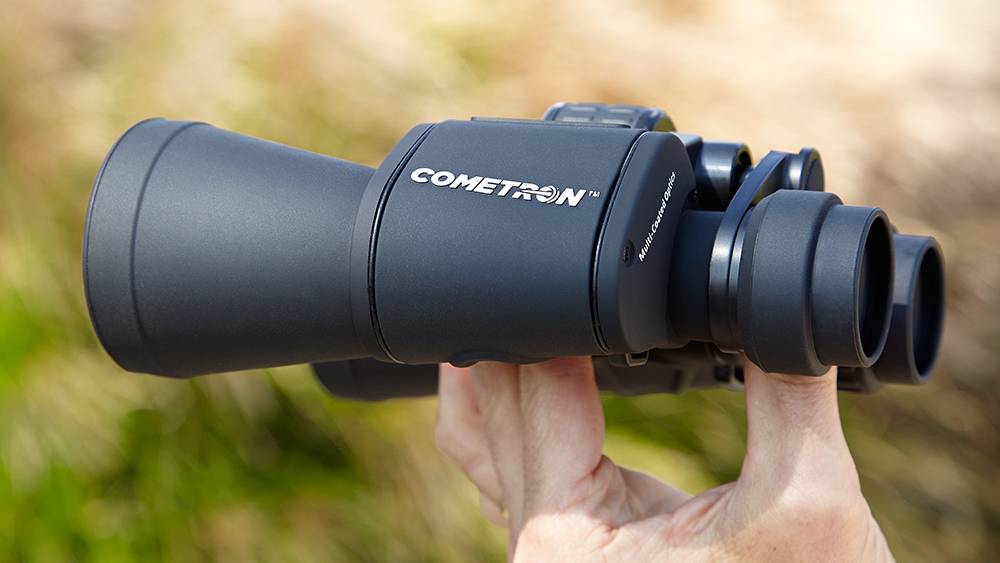
Porro prisms are almost always placed "outboard" of your eyepieces; that is, wider apart than the lenses you put your eyes up to. Porros are what give binoculars that classic, curvaceous "humpy-lumpy" look. They also naturally fit your relaxed hands.
Compact binoculars tend to be designed around "Roof Prisms." They are lightweight and can be made much more cheaply than Porros. But, paradoxically, roof prisms made with fine quality optical glass also dominate the very high end of the market: binocular sets with price tags well over $2,000.
Using Night Sky Binoculars on Earth
If you intend to use your skywatching binoculars for ball games, rock concerts, bird-watching, boat spotting, or any other terrestrial activity, there are two important things to look for: close focus and low mass.
Close Focus
As binocular models become more specialized for astronomy, they tend to focus more deeply. Their point of closest focus will tend to be more distant, the more highly specialized for skywatching they get. After all, you're mostly going to be looking at objects billions of miles away. Essentially, they are at infinity.
But birds and beasts and head-banging musicians will be much closer. To cope with this dual use, make sure your new binoculars can focus at relatively close range.
Look, also, for a center-focusing knob to easily jog both light paths to paint a sharp image on your retina for your brain to see.
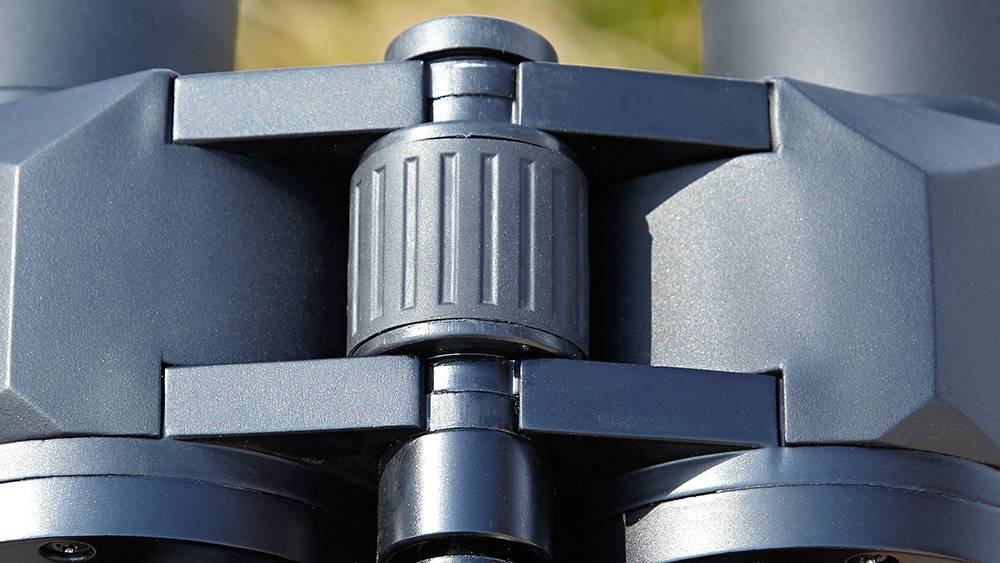
Low Mass
Make sure your binoculars not too heavy to hold, because you just might be holding them for hours, depending on the elusiveness of your target.
The center of mass should be in the prisms, comfortably over your palms. If the objectives at the front are too massive, they will create a lever that torques your wrists. You will see your muscle fatigue in the form of jittery images. Was that a black-chinned hummingbird? Or just a clearwing hawk moth? If you had lighter binoculars, you would know!
Conclusion
So those are the major points to consider when trying to find the right binoculars for you. Remember, you can see our best binoculars guide for more precise product recommendations and reviews.
The night sky is a truly wondrous place, regardless of how you view it: binoculars, telescopes or even the unaided eye. All you have to do is hope for clear night skies, and then look up.
Grab some binoculars and go see it tonight!
Join our Space Forums to keep talking space on the latest missions, night sky and more! And if you have a news tip, correction or comment, let us know at: community@space.com.

Dave Brody has been a writer and Executive Producer at SPACE.com since January 2000. He created and hosted space science video for Starry Night astronomy software, Orion Telescopes and SPACE.com TV. A career space documentarian and journalist, Brody was the Supervising Producer of the long running Inside Space news magazine television program on SYFY. Follow Dave on Twitter @DavidSkyBrody.
